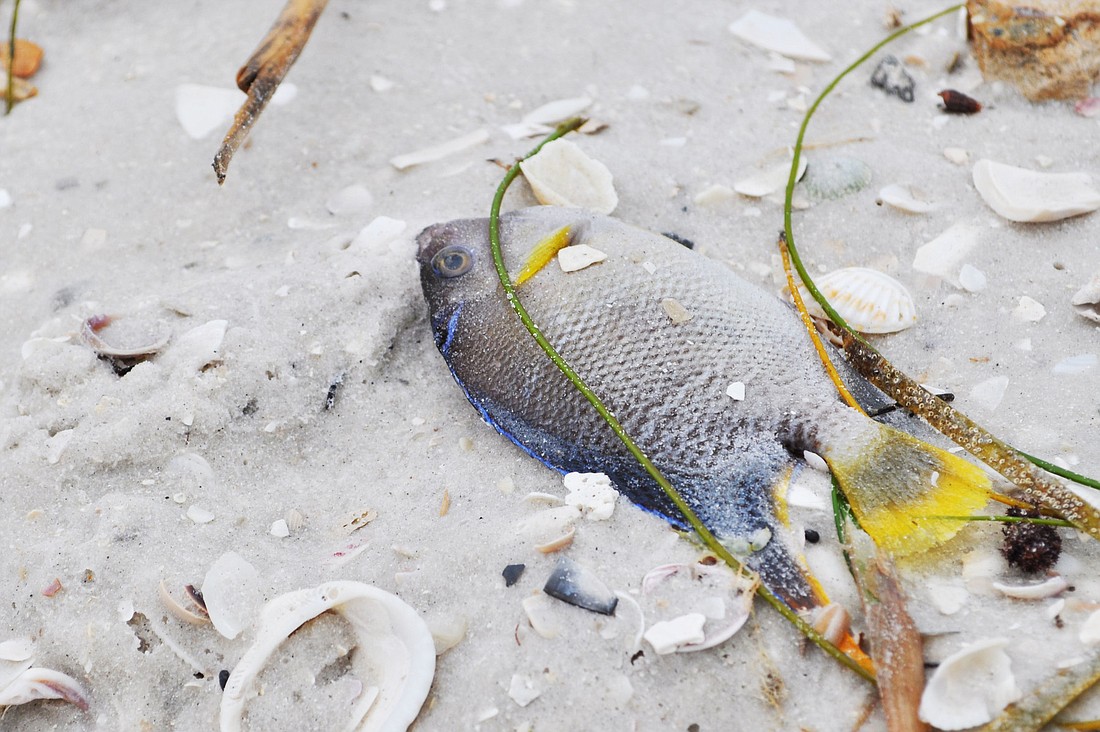- November 27, 2024
-
-
Loading

Loading

A red tide bloom has drifted further north to Siesta Key Beach and Lido Key.
Water samples taken Monday, Jan. 14, on Siesta Key Beach showed medium levels of Karenia brevis, the organism that causes Florida’s red tide, but the concentrations have increased through the week, said Tom Higginbotham, environmental health administrator with the Sarasota County.
“We have seen an increase, judging from observations we are getting from lifeguards and people experiencing respiratory effects,” Higginbotham said.
On Thursday afternoon, more than 50 dead pinfish and some larger fish, including at least 40 mullet and some catfish, were on the shore at the beach access at Beach Road on Siesta Key. Another 100 dead fish were floating in water directly off the shore.
The county has posted advisory signs on all public county beaches warning beachgoers of the effects of red tide.
“A lot of winter visitors are not familiar with red tide at all so they might not know what is happening,” Higginbotham said.
Karenia brevis levels were highest on Sarasota County’s southern beaches. The bloom had stretched north to Longboat Key.
People with underlying chronic respiratory problems, such as asthma, should avoid red tide areas, especially when winds are blowing toxins on or near shore, Higginbotham said.